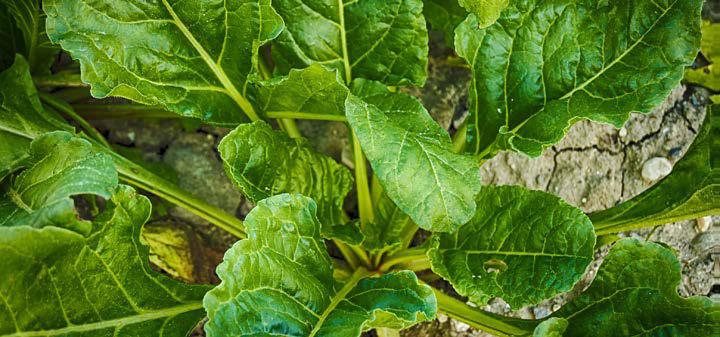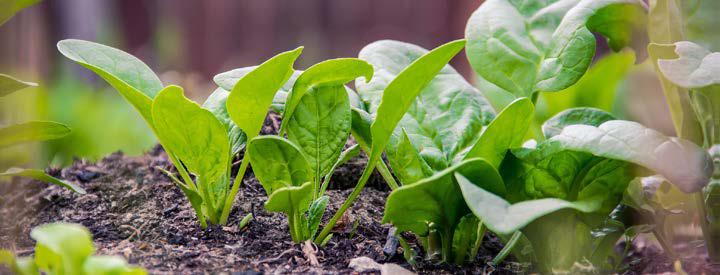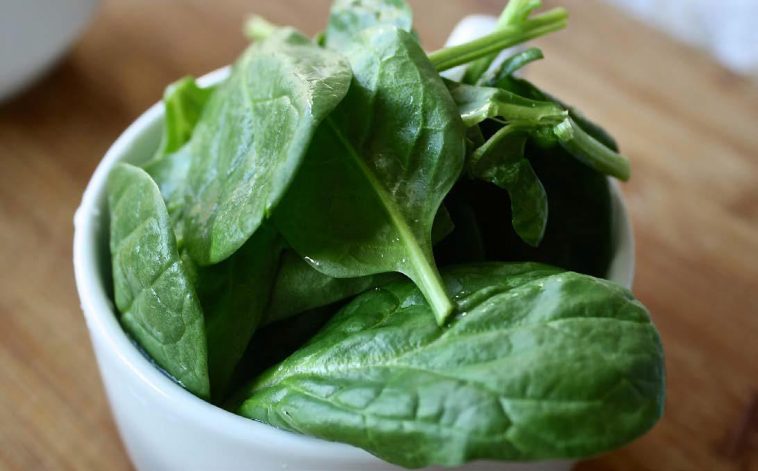Agriculture is not only limited to commercial farming units. In fact, the majority of agricultural products in Africa are produced by small-scale and emerging farmers. If more people are empowered by knowledge to grow their own food, there will be less hunger and better nutrition on the African continent.
This series of articles aims to teach you how to grow your own vegetable crops successfully, with different crops being featured in each article. In this first article, we discuss the best practices of growing spinach.
Climatic and soil requirements
Spinach seeds germinate at 2 °C to 30 °C. However, 7 °C to 24 °C is optimum. Seeds will not germinate well in warm weather. Although spinach will grow in temperatures ranging from 5 °C to 24 °C, growth is most rapid at 15 °C to 18 °C. The plant requires a constant and uniform supply of water in order to obtain a good crop of high quality. During spinach production, the soil should never be allowed to dry out. Spinach requires plenty of water, although the soil should have good drainage.
Spinach grows well on a variety of soils, although fertile, sandy loams with a high organic matter content are preferred. Heavier soils can be quite productive if these are well drained and irrigated with care. Spinach is particularly sensitive to saturated soil conditions and to acidity. The optimum soil pH is 6,2 to 6,9.

Spinach can be used as a source of essential vitamins and minerals to supplement
your diet.
Uses
Spinach is used raw in salads and cooked as a potherb. The leaves may also be canned or quick frozen. Spinach can be used as a source of vitamin A, B1, B2, niacin and calcium. The crop also has a hypoglycaemic effect that can be used in treating urinary calculi and lung inflammation. The seeds can be used as a laxative and for treating breathing difficulties and liver inflammation.
Cultivation practices
Planting
Spinach is propagated by seed that is found inside the fruit as a result of fertilisation. The soil will have to be ploughed to a depth of at least 20 cm and then harrowed. Harrowing should be done very thoroughly for the land to be flat, especially on irrigated land, so that the water can flow evenly. The seed is broadcast or sown in rows on wide beds. Spacing should be 50 to 60 cm between the rows and 15 to 20 cm between the plants in a row.
If the spinach crop is seeded directly, the planting depth should be about 20 mm. However, the depth of planting on heavy soils should be much shallower than that of the light soil for ease of germination and emergence. Spinach can be planted from August until April. Slight variations in planting date may exist because of the micro and macroclimate variation and taking into account the rainfall patterns and variation.
Fertilisation
Preplant phosphorus (P) application ranges from 56 to 112 kg/ha. Some growers use broadcasting and others band-placing (5 to 7,5 cm to the side and below the seed row) after beds are listed but prior to planting. N quantities should range from 90 to 224 kg/ha, depending on the length of the growing season and market destination. Approximately 56 kg/ha is applied before planting, followed by one to three sidedressings or water-run applications. In commercial conditions, tissue analysis can be used to evaluate the fertilisation need and the quantities required.
Irrigation
Spinach fields are sprinkler irrigated to ensure the germination of the seed. The very first irrigation is performed immediately after planting, and a second one can follow just before emergence. The first irrigation will be needed to germinate the crop, but several short sprinkler applications are often necessary to prevent soil crusting. Once a uniform stand is established, most growers switch to furrow irrigation. Continued use of sprinkler irrigation favours infection and the spread of leaf-spot diseases.

Spinach requires deep, fertile soil with lots of compost. Spinach also needs
to be watered regularly to prevent wilting.
Weed control
Hand-weeding is an expensive component of the crop production. A more economical alternative is to hoe the field when weeds are small and have not flowered yet. Sometimes two handhoeing methods may be necessary.
Shallow cultivations are also used to control the weeds on spinach fields. Only registered herbicides can be used during the production of spinach. A typical weed control programme includes the use of a preplant incorporated or a pre-emergent herbicide. This herbicide is applied before the plants are planted and after planting but before emergence. The most effective and efficient control of weeds is by integrated pest management.
Pest and disease control
Spinach leafminer and aphids are the most frequent pests of spinach. Control can be done by destroying infected crop residue and weeds. Also use registered pesticides. Apply management strategies for diseases and pests, including crop rotation and spraying with registered insecticide and fungicide.
An integrated pest management programme can be followed. Diseases include downy mildew, furasium wilt and yellow rot, spinach blight or yellows and damping off. These can be controlled by treating the seeds with a registered chemical immediately before planting; by planting resistant cultivars; avoiding planting when the soil temperature is high; practising 3-year crop rotation; and considering hot water treatment of the seed.
The information provided in this article is credited to the South African Department of Agriculture, Forestry and Fisheries. For more information visit their website on www.daff.gov.za.









